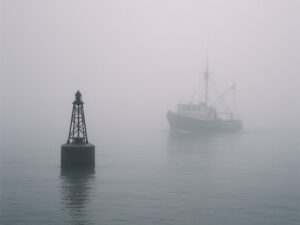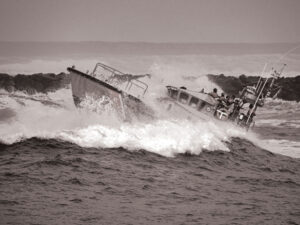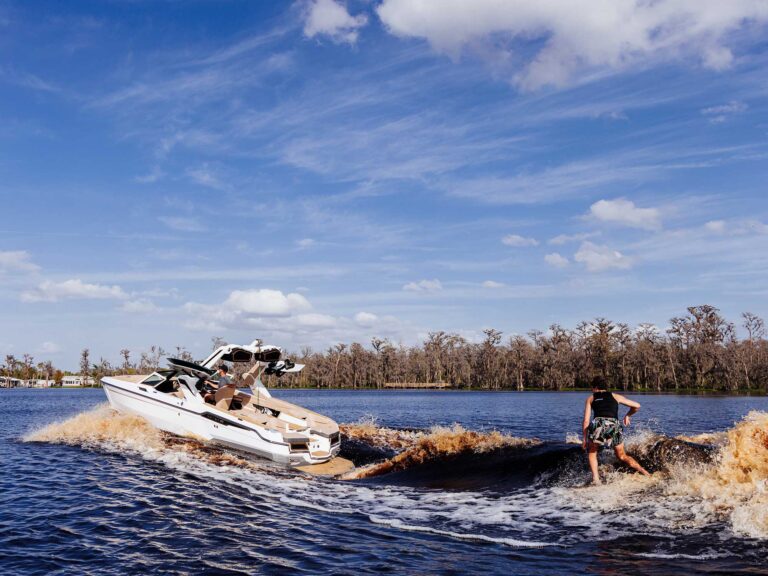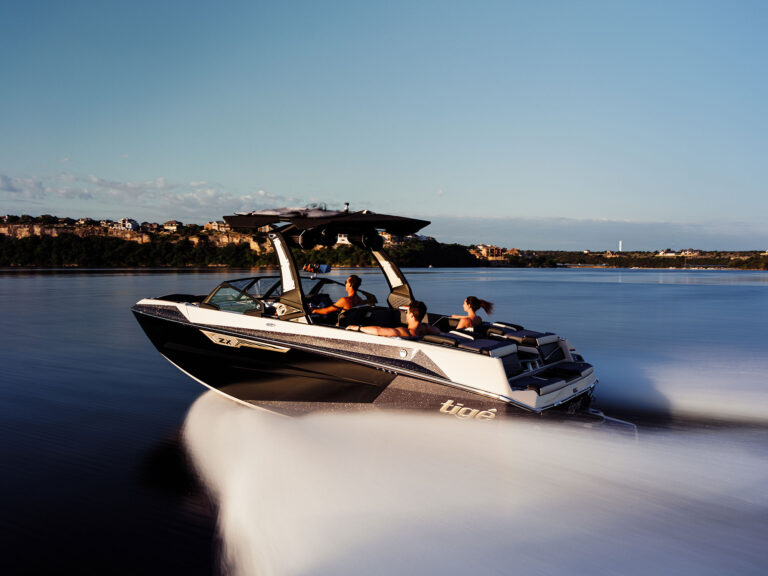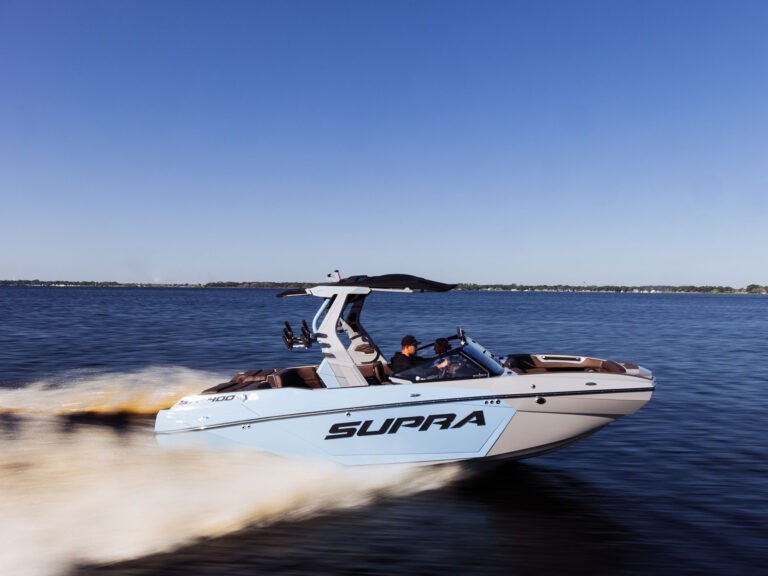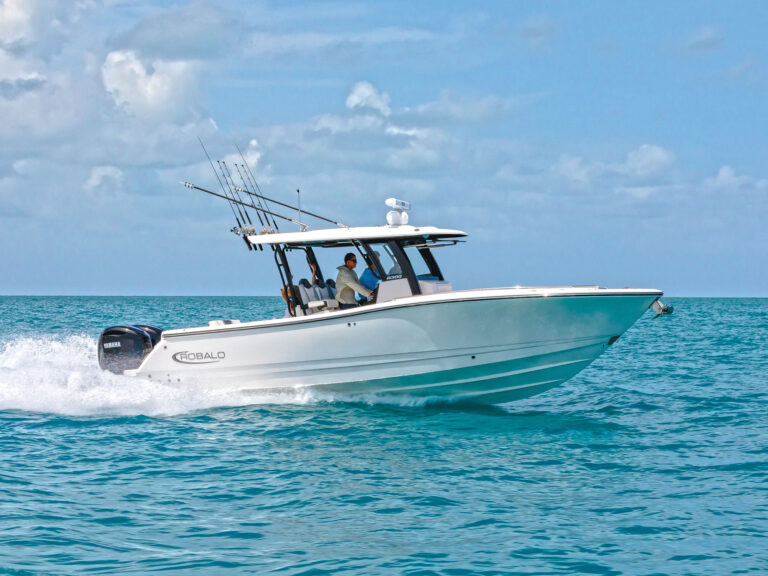Admit it. You take a certain pleasure when you hear about another boater’s misfortune. You feel smarter and somehow superior. And that’s ok; we all do. But remember that not learning from the mistakes of others is just plain dumb. Here are some screw-ups from the files of the Coast Guard. The names have been changed to protect the innocent — just make sure you don’t join their ranks one day!
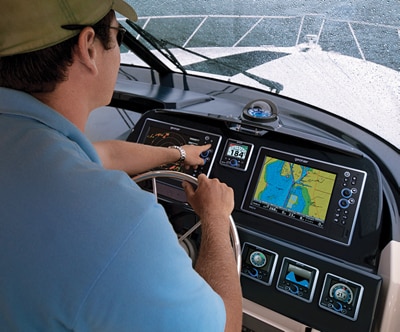
Don’t Get Caught
Blinded by Science
San Juan Islands, Washington
“I’d just installed a new electronic chart, totally up to date; the chart plotter said we were far off and in deep water.”
Problem: Cold, rainy and almost no visibility. Just another night passage for Mark in his 42-foot motoryacht through waters littered with islands swept by strong currents. It’s too nasty to stand watch outside, plus he’s alone and can’t leave the helm, so Mark puts his faith in the chart plotter — which in turn puts him on the rocks. Afterwards it was found that he was unknowingly dealing with a navigational error of more than 450 feet.
Prevention: Navigating with GPS is not always as accurate as it seems. Set one down so it is not moving and just watch the readings keep changing. According to the U.S. Department of Defense, which maintains the system, the GPS signals we get should be accurate to within 50 feet 95 percent of the time, while the other 5 percent can be out as much as 300 feet. In practice, however, the average tends to be around 30 feet. To improve on this, WAAS (wide area augmentation system) brings it to an official 23 feet for 95 percent of the time but seems to average closer to 10 feet.
All very good, but what about the chart the GPS is putting you on? Until the mid 1990s, in pre-satellite times, NOAA’s general requirement was for position accuracy on a typical coastal chart to be around 30 yards. While charts are constantly being updated using modern electronics to provide greater accuracy, it’s a slow process.
In Mark’s case the position of the tiny island he hit was from an old survey, accurate to only 160 feet. Plus, three of the four visible satellites (ones above the horizon that the receiver can use) were almost in a straight line, giving a poor fix. For optimum accuracy you want the satellites to be spread out all around you. To check, look at the unit’s satellite page to see where the satellites are and the EPE (estimated position error) display.
When navigating in a channel the Coast Guard likes to have an accuracy of 15 feet or better, which is not always possible. That’s why when things get tight it’s time to take your eyes off the screen and start keeping a good lookout.
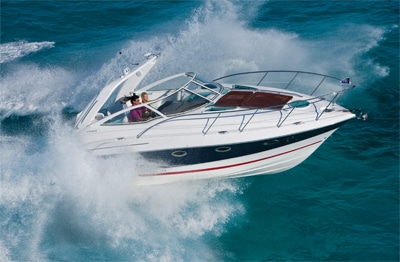
Don’t Get Caught
Stuff It
Fire Island Inlet, New York
“We could see that the waves were breaking, but from offshore they still looked manageable.”
Problem: Pete’s in the ocean aboard his go-fast center console searching for fish. As the sea breeze builds during the day, so do the waves, but coming back along with them he doesn’t sense their full power — that is, until just inside the inlet when the boat’s long, skinny bow buries itself into the back of a wave all the way to the console. The boat comes back up and Pete makes it in, but he’s wet and obviously shaken.
Prevention: Waves always look smaller when seen from behind, and that was Pete’s first problem — perception. His next issue was speed.
In a following sea, adjust the drives and tabs to keep the bow up, then work with the throttles. You can safely run at almost any speed as long as your boat’s bottom is long enough to span three wave crests, keeping the ends supported so as not to let the bow drop into a trough. Seas of three feet or less should not affect a boat 30 feet or longer, and boats under that length can usually handle a small chop. But when offshore, more throttle work is required.
Follow a contour up and down the waves, constantly changing the boat’s running attitude with the throttle. Start matching the speed of the waves, riding on their backs about a third of the way down from the crest. You can occasionally throttle up to run over a wave crest after it has broken. Don’t forget to watch astern to make sure a breaking wave isn’t catching up to you. If one does, goose it to remain ahead.
Pete’s final issue was timing. It’s best to enter an inlet during slack high water so there is little current and plenty of deep water. The worst time is toward the end of an ebbing tidal current.
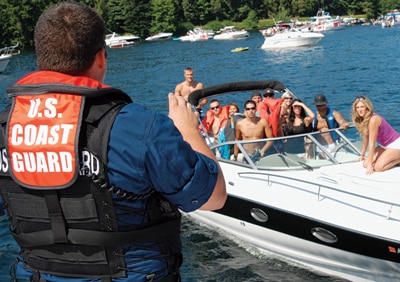
Don’t Get Caught
Plane to See
Chesapeake Bay, Maryland
“I only lost sight of the other boat for a few seconds as we were getting up on plane.”
Problem: Coming out of the harbor’s channel in his bowrider, John sees a personal watercraft to port that is headed in but apparently still far off. So John nails it to get on plane, and then — wham! — he and the watercraft collide. John admits that for about six seconds he was running blind but says the craft didn’t seem that close. The watercraft rider was unhurt but shared the blame.
Prevention: First off, the watercraft rider ignored a basic rule of the road. In crossing situations, the boat to starboard (John’s boat) is the “stand on” vessel and must maintain its course so the other vessel (the watercraft) can better predict its movements. The watercraft is the “give way” vessel, which must keep clear — which it didn’t.
Confusing the issue was that John was gaining speed so rapidly that it was difficult for the watercraft rider to predict the bigger boat’s trajectory. And John had the difficult task of judging the speed and distance of a small object, the watercraft, coming directly at him.
The biggest problem here was the boat’s poor performance, taking so long to get on plane with its bow high in the air. Imagine driving a car and not being able to see where you’re going for six seconds while accelerating to highway speed. Enforceable guidelines for excessive bow rise are vague, but, in general, anything more than 5 degrees or losing sight of the horizon while seated is too high. A boat struggling to get on plane with its bow in the air is often a sign of insufficient power. If a boat you’re thinking of buying does this, consider upgrading to a larger engine. Most sport boats should be on plane within four seconds. Cruisers to 32 feet should take about eight to 10 seconds. Another good reason to always take a test drive before you buy.
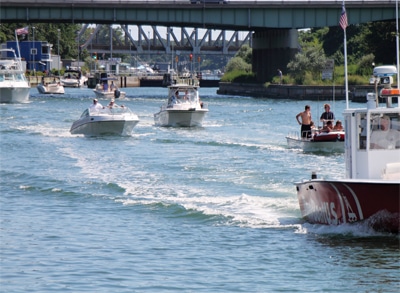
Don’t Get Caught
Failed to Pass
Intracoastal Waterway, South Carolina
“It’s a fast boat, so I focus more on what’s coming at me than what’s behind.”
Problem: Bob’s hardtop express cruiser is stuck behind a sailboat creeping along under power at 3 mph in a narrow channel. When oncoming traffic finally allows, he swings out to port to pass. But, to Bob’s surprise, he’s immediately rammed by another boat trying to pass both him and the sailboat. Bob later admitted that, although he checked, he never saw the other boat coming.
Prevention: Boats that are about to pass are required to signal by radio or horn. Bob should have signaled the sailboat, and it should have responded so everyone would know what was about to happen. The same goes for the boat that hit Bob, which also remained silent. The bigger issue, however, was Bob’s lack of visibility to his port quarter. When shopping for a boat, it is up to you to look for these blind spots.
In bowriders or deck boats, ask people in the showroom to sit in the forward cockpit to determine whether you’ll be able to see ahead. Ski boats offer excellent wide-angle rearview mirrors. Install one either on the windshield frame or the helm. Sit in the driver’s seat with your head up and good posture to check if the windshield frame cuts off your view. Turn around in the seat as if looking back and to the sides. Like Bob, you’ll be doing this quickly while under way, so anything — no matter how small — can block your view. Put on polarized sunglasses to see if the windshield’s glass shows a blotchy pattern that is hard to see through. Look for flip-up bolster helm seats that let you sit higher or stand securely for a better view. Buy the windshield wiper option. Make sure that the blade fully retracts and that the motor is mounted out of your field of vision. The top of the helm should be a dark, dull, textured surface to reduce glare. If not, see if it can be covered with a snap-on section of dark canvas.
Tanks for the Warning
Mobile Bay, Mississippi
“I never knew there was a problem; you can’t fix what you don’t know is wrong.”
Problem: Jeff is obsessive when it comes to caring for his six-year-old cruiser. So he was surprised when the surveyor said that the fire that destroyed his boat was caused by a poorly maintained aluminum fuel tank. There was a pinhole leak that let gas gather in a section of the bilge where the limber holes were clogged. Jeff said it was the one place on the boat he couldn’t reach.
Prevention: Not long ago the Coast Guard issued a warning about the alarming failure of aluminum fuel tanks in recreational boats. Citing a long-term Underwriters Laboratories study, the Coast Guard pointed out that 92 percent of the failures were a result of corrosion. As the study reveals, part of the problem is that aluminum fuel tanks are often considered “maintenance-free.” So, with limited available space, they are often pushed into the least accessible corners, making regular inspection almost impossible.
Although corrosion from sloshing bilge water is the most common culprit, the study found several instances of abrasion. One boat’s fuel tank was mounted on top of a rubber pad, but the staples that held the pad in place weren’t recessed and eventually wore into the tank. In another case, brass fittings were secured directly into the aluminum, promoting galvanic corrosion.
Almost every aluminum tank examined had some form of corrosion, which can be seen as a patch of fine white powder. In every case the common factor was that the tank hadn’t been installed so that it could be inspected or repaired.
Ask your builder or dealer where the inspection ports are, and determine whether you can see susceptible connections, joints, welds, supports and restraints. Examine the bilge to see whether water will flow freely past the tank and not be trapped under or around it. Also, consider thickness. The study found that most failures occurred in tanks constructed of 0.090-inch or thinner aluminum. An alternative to aluminum is polyethylene; just make sure the tank is marked to show that it meets Coast Guard or ABYC standards.
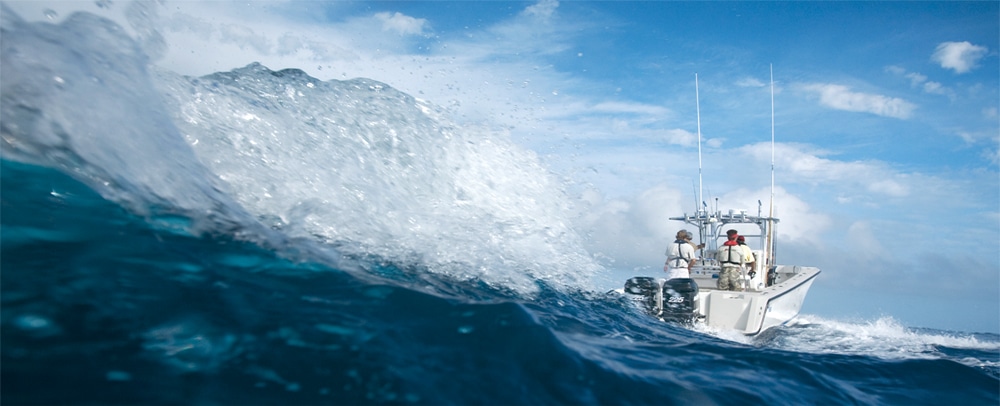
Avoiding Costly Boating Mistakes
Top 10 Ways We Get Into Trouble
1. Operator inattention – 749 accidents
2. Operator inexperience – 439 accidents
3. Excessive speed – 427 accidents
4. Improper lookout – 335 accidents
5. Alcohol – 308 accidents
6. Machinery failure – 282 accidents
7. Weather – 260 accidents
8. Hazardous waters – 242 accidents
9. Force of wave or wake – 229 accidents
10. Not knowing rules of the road – 110 accidents


